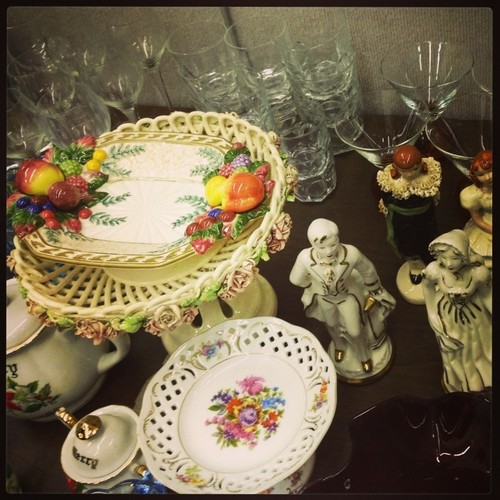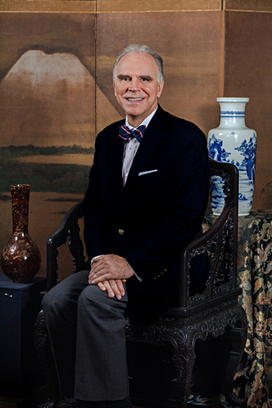But not just any trash cans, mind you; I love the smaller-sized, vintage and retro trashcans more properly called wastebaskets.

At first glance, the uninitiated might dismiss these gems for several reasons.
“Eeeiwww, they’re used!” the skeptics recoil. I’ll acknowledge that, like most vintage items, these wastebaskets have been used — and that may mean bits of gum and I’m-too-afraid-to-guess-what-it-is spots. But in all honesty, doesn’t your brand new waste can end up the same? Wash it out as best you can and then stick a liner in it. Starting fresh and clean may seem preferable, but this is recycling. Do we really need landfills filled with old wastebaskets?
“They’re too small to be practical!” is the other complaint I hear. But I assure you they are not too small. They are just the right size to fit in those small but well-used places that you need a receptacle for used tissues, out-dated appointment cards, spent pens, unnecessary receipts, and other useless bits and bobs that pile up on desktops, counters, etc. because folks (not you, I’m sure, but other people you live with wink-wink-nudge-nudge) are too lazy to carry them off and properly dispose of them. Places like bathrooms, bedrooms, foyers… Any room with a desk — in fact, many of these vintage wastebaskets actually fit in that side-space on modern computer desks! The more places you put these little beauties, the less clutter you’ll suffer from.
And they are little beauties.

With decades worth of designs, there’s likely sure to be plenty to appeal to you and go with your home decor. Everything from kitschy fun retro wastebaskets with fabric Scottie dog appliques to classic feminine florals — and more.
When it comes to vintage wastebaskets, I prefer the metalware models (but plastic versions are available too). The big name in collectible vintage wastebaskets is Ransburg, but there are other names, less known and so less sought after.
Frances Martin made my blue painted wastebasket with gold flowers; the cans will usually have the name printed on the bottom, centered, like this (hard to read, even when you click and enlarge the photo):

My pink texturized waste can is by Pearl-Wick. It has a plastic rim-footer around the bottom which was once gold; but most of that has peeled away, leaving a milky clear band which isn’t noticed when it sits on the carpeted floor in the bedroom.

The fabric-covered metalware wastebasket — the adorable Scottie on burlap — was made by Creative Made (Hand-Crafted Gifts, Annapolis, Maryland). The paper label remains fixed to the bottom, with the hand written copyright date of 1975; many collectible wastebaskets have lost their tags and so go uncredited, making finding and/or identifying makers difficult.

Many vintage wastebasket collectors don’t mind signs of wear, as long as they do not detract too much (like other old things, signs of wear are part of the charm), but in terms of ‘collectible conditions’, the things to look for and avoid are rust, dents, splits at the seams, and damages to paint or other decorations.
To keep your vintage metalware wastebasket in great condition, avoid keeping it in damp or wet places. Cleaning the outside is best done by washing it with a mild dish soap and a soft cloth — and drying it thoroughly. Avoid harsh cleaning products, never use abrasive cleansers; test any cleaning products on the bottom of the can where boo-boos will not be noticed.
For more stubborn spots and marks on the inside you can be more industrious, if you’d like; trash liners will hide scouring marks as well as whatever you can’t remove. Be sure to dry it well.
A word on rust: If you want to slow or stop the spread of rust, you can do so with a very fine steel wool. I don’t recommend doing this on the outside of the can at all; but on the bottom and/or insides you likely can’t make it look any worse. Personally, I just leave it — or avoid buying those cans to begin with.
Some people save less-than-perfect cans for creative gardening, like Kathy Stantz; just know that such use will only further damage the vintage wastebasket — even if you don’t drill drainage holes.






























































